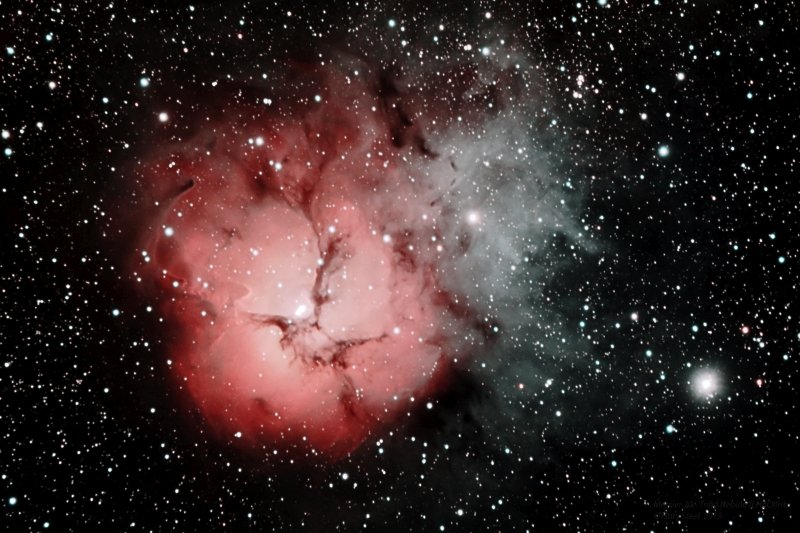I published a wide-field photo of Messier 20 (about 4.1 kly, in Sagittarius) back in June, which prompted me to go after a proper 'head and shoulders' shot - with a twist, as this time I combined luminance and narrowband light. "Narrowband" is a term used by astrophotographers to denote the use of one or more filters to gather image data from very narrow slices of the spectrum. In this image, those filters were hydrogen-alpha (looking through it, an intense red), hydrogen-beta (dark blue), and oxygen-III (cyan/green-ish), bolstered by the luminance data. Besides making for some very striking photos, narrowband filters can give a better sense of the structure and composition of a nebula. Be warned, though: data acquisition to get a fair image can be a lengthy and challenging task, and, despite the technical aspects, the final post-processing is very much more an art than a science.

Photo stuff:
Date: 07 and 12 July, 2019
R.A.: 18h 10m 04.0s
Dec. -21° 48' 21.1"
Canon 60Da on Meade RCX400 f/8 16"; Astronomic .7 focal reducer
Luminance: 17 subs @ 300s ea.; ISO 1600
